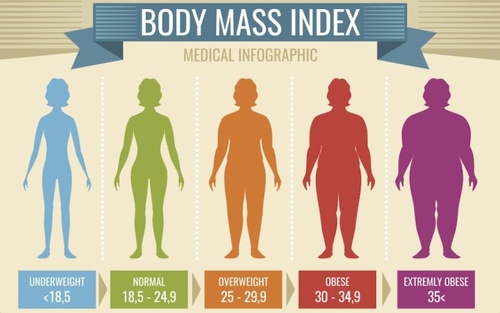

Body Fat Measurement Methods
BMI does not measure body fat. If you're interested in knowing your percentage of lean mass versus fat mass there are several methods of assessing a body's percentage of fat. These methods are referred to as body composition analysis.
Some of the most common measurements include:
Bioelectrical impedance: This common method of assessing body fat percentage determines total body weight, the percent and amount of body fat, muscle mass, water, and even bone mass. While readings can be affected by hydration level and other factors, they provide fairly accurate results over time. Some body fat scales for home use employ this method of measurement.
Dual-energy x-ray absorptiometry (DEXA): This is an x-ray scan that measures a person's bones (specifically their mineral density and bone loss) to calculate the possibilities of developing osteoporosis. However, these DEXA machines have limitations and the technology that is widely used is unable to measure the bones in people who weigh 300 pounds or more or who are taller than 6 feet.
Skinfold thickness measurements: Many experts use this simple method to determine body composition.
Underwater weighing: This procedure, also known as hydrodensitometry or hydrostatic weighing, is complex and complicated, so it is rarely used.
A Word From Verywell
While body mass index can be a useful tool for some people, it is just one number that should always be considered within the context of other data. Talk to your healthcare provider about the best way to understand your BMI as part of a comprehensive plan for good health and longevity.
Updated on October 17, 2022
Medically reviewed
by Marisa Moore, RDN, MBA
HEALTHY Body and Mind
